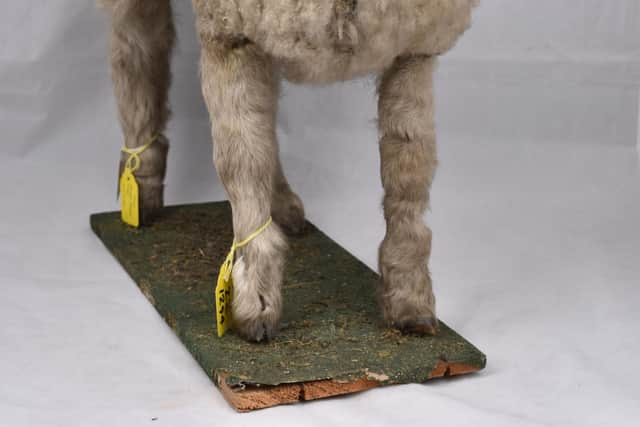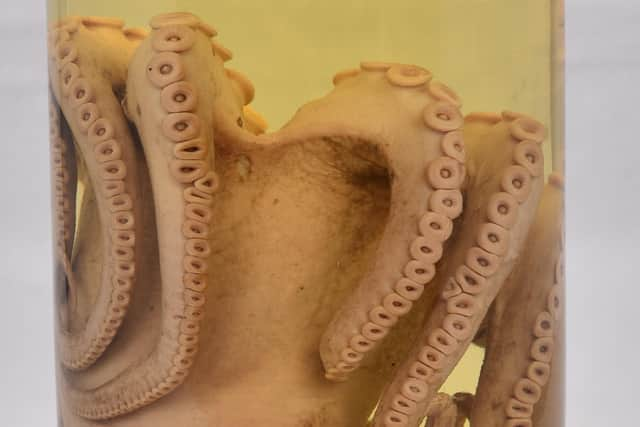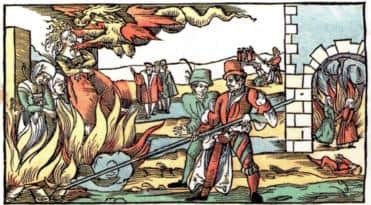Discover Doncaster's real-life history of witchcraft trials
and live on Freeview channel 276
But what if the supernatural was all very real and happening right here in South Yorkshire?
Blaise Catley at Heritage Doncaster had been searching the museum files for stories about local people for a series of 5 Minute Histories, new bite-sized audio plays inspired by real-life Yorkshire people from the past, full of heart-warming drama and entertainment, and free for everyone to download online.
Advertisement
Hide AdAdvertisement
Hide AdShe discovered an intriguing tale which sheds light on South Yorkshire’s role in the witchcraft hunts that shocked the nation in the 1600s.


“If you lived in South Yorkshire a few centuries ago, witchcraft would have been a genuine fear,” says Blaise.
“Many people would scratch ‘witch marks’ on their door frames or fireplaces or wear amulets to protect themselves from witches’ curses, and Halloween was a particularly fearful time.
"To make it worse, witches could be anyone – your neighbours, or even your own family!”
Advertisement
Hide AdAdvertisement
Hide AdIt wasn’t until 1735 that the death penalty was removed for witchcraft but the law survived until 1951, with the last prosecution in 1944.


Blaise explains: “Sadly, many people were falsely accused. If there was a bad harvest, sick animals or a difficult pregnancy, suspicion fell on anyone who was different or socially isolated. Any eccentricity of lifestyle or manner could lead to accusations of witchcraft, but some accusations were simply malice.
"Neighbourhood gossip and reputation were powerful. Many of the accused were the poor and elderly – people who had no-one else to stick up for them. Just like local woman, Joan Jurdie.
"Her story was so interesting and so relevant to today – I just had to give Joan a voice, and that’s how she’s ended up being a star of our 5 Minute Histories.”
Advertisement
Hide AdAdvertisement
Hide AdIn 1605 Joan Jurdie of Rossington was accused of witchcraft, causing the death of Jennet Murfin. In November 1604, she’d been invited to join the women of the village to attend the birth of Jennet Murfin’s child – which was customary, and therefore common practice at the time.


For some reason Joan didn’t attend and she also refused to take part in the traditional drink and ‘labour cake’ party following the birth. Joan may have had genuine reasons for not attending - or maybe she just really didn’t want to!
Two days later, Jennet Murfin fell ill after a visit from Joan. Suspicions were raised, and with hateful gossip swirling around the village, Joan was accused of being a witch.
Joan’s neighbours approached the Mayor of Doncaster, Hugh Childers, with a series of depositions.
Advertisement
Hide AdAdvertisement
Hide AdAnne Judd, Jennet Murfin’s sister, testified that she had visited Joan’s house and Joan had asked after Jennet and the baby. When she was told that they were unwell, Joan apparently replied ‘she is not at
the worst, she will be worst yet’. This was interpreted as a threat.
Anne also testified that before her death Jennet had said she was ‘ridden with a witch’ and had told Katherine Dolfin that ‘she hath killed me, I may never recover’. Jennet had then gone on to say that she had been feeling fine until the visit from Joan.
Katherine Dolfin was called before the mayor and confirmed what Anne Judd had said. Katherine also told the mayor that she had previously been to Joan to seek help from her witchcraft and Joan had cured her sick child.
Advertisement
Hide AdAdvertisement
Hide AdIn a later testimony Katherine Dolphin also said that a Jane Spight of Rossington had previously sought help from Joan for a sick calf.
She went on to add that following her previous testimony Joan had threatened her and her husband and immediately following this an ox, cow and steer had fallen ill will a mysterious illness.
Joan Jurdie’s servant confirmed that her mistress had given Anne Judd sage leaves and honey to rub on to her sister’s baby’s sore mouth and confirmed that she had heard Joan make the remark that Jennet would get worse.
In her subsequent trial, Joan Jurdie steadfastly denied all the accusations made against her and said that she had no special powers.
Advertisement
Hide AdAdvertisement
Hide AdThe mayor and justices of the peace seem to have been convinced of Joan’s innocence and evidence suggests that they dismissed the case, but Joan’s neighbours continued to conspire against her.
In 1608 she was charged again, this time for using witchcraft to cause the deaths of Hester and Jane Dolfin, and George Murfin, all from families previously associated with her case.
Nobody knows what happened next – no evidence survives in the records, and we’ll never know all of Joan’s side of the story, but if Joan had been found guilty this second time it’s very likely she would have been sentenced to hang.
“500 people lost their lives in England, but it’s estimated that 50,000 were executed in Europe due to the Witchcraft Act,” says Blaise.
Advertisement
Hide AdAdvertisement
Hide Ad“During the current pandemic, I think we can all relate to that lurking sense of unease and fear, of hidden dangers within our neighbourhoods; and the modern ‘curse’ of trolling is frequently in the headlines, along with the dangers of persecuting people who are different.
"Stories like these highlight how important it is to cherish our sense of community, to be kind to others. The real crime in Joan’s story isn’t witchcraft, it’s that vulnerable and lonely people were victimised when they needed their neighbours’ help and support more than ever.
"I think this is definitely something to be mindful about, when we hear Joan’s story.”
If you want to hear Joan Jurdie’s trial, or discover more Yorkshire people with fascinating stories, download 5 Minute Histories at www.heritagedoncaster.org.uk.
Advertisement
Hide AdAdvertisement
Hide AdYou can also download free new activity packs designed to help you explore history at home or find out how to join free new virtual Wonder Clubs exploring South Yorkshire’s incredible history.
In these confusing and worrying times, local journalism is more vital than ever. Thanks to everyone who helps us ask the questions that matter by taking out a digital subscription or buying a paper. We stand together. Nancy Fielder, editor.